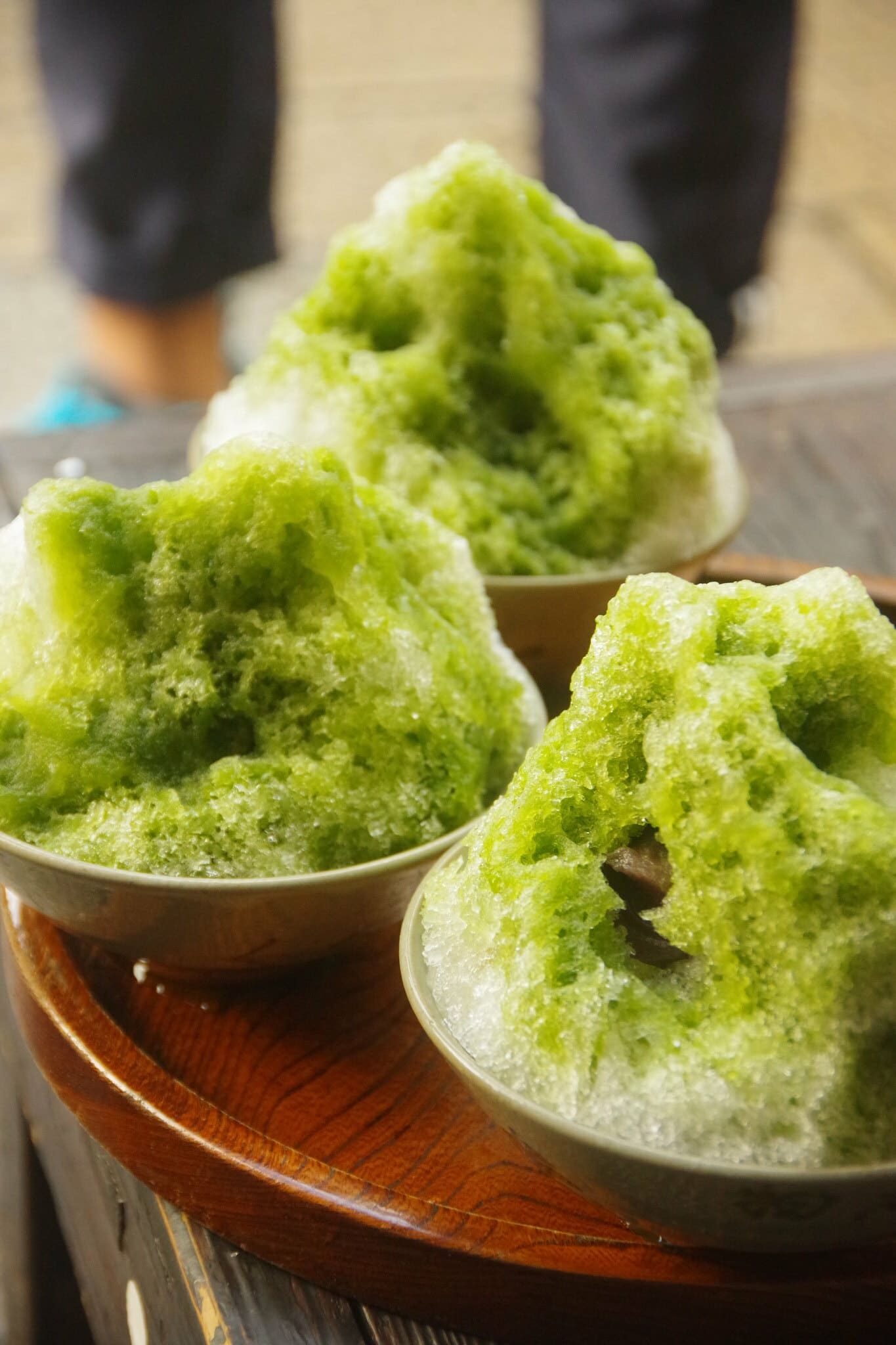
All About Japan’s Natural Dessert.
Japan has countless food specialties that vary according to the season. In the hot summer months, one of those specialties includes the famous stacked kakigori. Read about the kakigori history and what makes the Japanese shaved ice so special.
Kakigori History, Origins, and Timeline
In the 10th century, a book was discovered about the royal courts in Kyoto including a passage about the beloved summertime dessert, kakigori. This cold dessert came from frozen natural mineral water sourced high in the snow-capped mountains of Japan. The ice blocks were stored in ice houses high in Kyoto’s mountain region. During the summer, the ice was carted down to the palace, hand-shaved with a knife, piled into deep metal bowls, and topped with a sweet sap from vines, hydrangeas, and ivy.
In the 19th century, ice was more available to the public thanks to transportation and cold storage. The first kakigori shop opened in 1872 in Yokohama. Then, in the 1930s, ice shaving machines were invented which revolutionized the access to the sweet, refreshing dessert.
Why is Kakigori so special?
Aside from its obvious beauty – and it is with how modern dessert shops decorate the pile of ice – the quality of the ingredients and the techniques are what make kakigori so special.
First of all, the ice comes from natural mineral spring water directly from the sources throughout Japan. Then, the ice is tempered in order to be shaved in such a way that there is consistent smoothness and fluffiness. The result is an eating experience like you’re lightly biting into the fresh falling snow.
Sign up for my newsletter on the sidebar for blog updates and my travel insider tips! And, check out my vlogs on YouTube!


